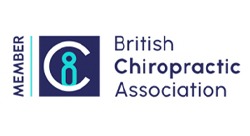Posture Guide
Even the simplest of mistakes in the way you hold your posture can affect your level of comfort when working at your computer or sitting at a desk. Good posture is about so much more than simply sitting and standing up straight.
Your posture is a crucial aspect of your long-term health. Poor posture can cause lasting neck pain, and over time, may cause spinal strain too.
Ensuring that you hold your body the right way when sitting in a chair, moving equipment and furniture, or simply walking down the street can prevent pain, injuries, and other avoidable health issues.
Our expert consultant chiropractors at Canary Wharf Chiropractic can provide therapy and advice to ensure that you adopt healthy and safe posture habits for life.
Understanding Posture
So, what exactly is posture, and how does it affect your body?
Essentially, posture is the way you hold your body while sitting at your computer, enjoying exercise, taking a walk, or even standing still.
There are two types of posture.
Dynamic posture is the way you hold your body when you are moving, running, walking, bending over, or picking up heavy items.
Static posture is the way you hold yourself when you are sitting, standing, or lying down.
If you experience pain or discomfort while carrying out any of these actions, the chances are that poor posture could be causing these issues. Slouching and other bad habits can elevate your risk of muscle strain and developing other unwanted musculoskeletal conditions.
The key to good posture, according to science, is to correctly position your spine. Your spine has three natural curves at your lower back, mid-back, and neck. Healthy posture should maintain these curves, but not exaggerate them as slouching tends to do.
Chiropractic guidelines suggest that your head should ideally be above your shoulders, and the top of your shoulders should be positioned directly above your hips.
Adopting bad posture while you’re at your seat or your desk can put significant strain on your spine, neck, and legs. Now that so many more people are working from home, experts are identifying an increased incidence of posture mistakes that could lead to pain and muscular strain.
To avoid these issues, you need to practice healthy sitting habits, including switching seated positions often, taking regular brief walks around your workplace, and gently stretching your muscles.
Proper posture equally distributes your body weight over all of the joints in your body. Poor posture does the opposite. It places increased stress on your muscles, ligaments, tendons and joints and forces them to work harder to maintain your body’s position as a result.
Intense fitness regimes, ageing, and work-related tension can all place strain on your muscles, tendons and joints. Without adequate rest, this strain can quickly develop into full-blown musculoskeletal disorders.
Bad posture can be hazardous, but there’s no need to be nervous about it. It’s possible to correct these habits to ensure comfort in the office, at home, and while you are out and about.
Proper posture should become an essential part of your everyday lifestyle. It should encompass everything from the way you sit and lift items at work to the way your feet are positioned while performing these activities.
Our chiropractic consultants can offer advice on posture habits that will preserve the health of your muscles and joints, and significantly increase your range of movement.
Contrary to popular belief, posture problems don’t exclusively affect older people.
The way we position our bodies during activity can have notable impacts at every age. Even children can be affected by improper posture, which can cause spinal curvature and neck and back strain.
Adults and seniors too can experience injury and wear to their bones, along with strain, tension, kyphosis, and other common issues.
Has your hip, knee or joint ever been strained or injured while doing something as simple as standing up or lifting something off the floor?
If so, this is a clear sign that your posture could be optimised. There’s a correct way to carry your posture during every activity, from standing up from the couch to lifting boxes, standing at the bus stop, and working at your desk.
Learning how to perform these actions safely will vastly improve your experience with physical activity and can minimize pain too.
Do you expect to be spending your career on your feet or lifting heavy items on a regular basis? Workers like medical practitioners, education professionals, and even construction workers are all prone to chronic injuries and conditions of the spine, shoulders and back due to the range and repetition of movements their jobs require.
Learning how to use your shoulder, arm, and forearm strength more efficiently will help to minimize discomfort and the costs associated with treating preventable medical conditions.
If you want to perfect your posture and improve the strength and shape of your back, providing your body with the correct support is essential.
Support aids like back pillows, ergonomic office furniture and orthopaedic shoes provide your spine and joints with helpful reinforcement that assists in preventing tension and injuries.
Speak to our expert chiropractors about their support aid recommendations.
There’s no better time to start improving your posture than right now.
Here are our top tips to get you started:
- Regularly perform gentle stretching exercises to relieve muscle tension.
- Protect your lumbar spine curve by using a back pillow, a footrest, and an ergonomic work chair.
- Relieve pressure on your joints and muscles by wearing comfortable, low-heeled shoes.
- Use gravity to guide your posture. Lie down on a flat surface or stand straight against a wall and allow natural gravity to correct your posture.
- Reduce strain on your joints and muscles by ensuring that your seat is well padded and that your thighs and hips are parallel to the floor while you are seated.
- Keep your feet shoulder-width apart while standing.
- Keep your head level as much as possible while standing and sitting.
Sitting with your legs, heels and knees in a proper position protects your joints and muscles, and correctly positions your spine.
If you’ve noticed any signs that your posture isn’t optimal, including neck and back pain and consistent muscle strain, it might be time to consult a chiropractic expert. Canary Wharf Chiropractic can offer you the advice and assistance you need to get you working, sitting and walking with confidence again.
Our experts can guide you as to how to position your chest, chin, wrists, forearms, spine, legs, feet and back to minimise injuries and correct slouching. We offer research-backed advice on how to correctly use a mouse and keyboard, how to distribute weight when lifting and carrying heavy items, and even how to correct your posture safely during pregnancy.
Our services also include preventative treatments for back pain, neck pain, joint and muscle tension, headaches, and postural correction. Furthermore, we can teach you healthy stretches and exercises that can reduce tension and pain, and help keep you comfortable no matter what your daily schedule demands.
Even the simplest of mistakes in the way you hold your posture can affect your level of comfort when working at your computer or sitting at a desk. Good posture is about so much more than simply sitting and standing up straight.
Your posture is a crucial aspect of your long-term health. Poor posture can cause lasting neck pain, and over time, may cause spinal strain too.
Ensuring that you hold your body the right way when sitting in a chair, moving equipment and furniture, or simply walking down the street can prevent pain, injuries, and other avoidable health issues.
Our expert consultant chiropractors at Canary Wharf Chiropractic can provide therapy and advice to ensure that you adopt healthy and safe posture habits for life.
Understanding Posture
So, what exactly is posture, and how does it affect your body?
Essentially, posture is the way you hold your body while sitting at your computer, enjoying exercise, taking a walk, or even standing still.
There are two types of posture.
Dynamic posture is the way you hold your body when you are moving, running, walking, bending over, or picking up heavy items.
Static posture is the way you hold yourself when you are sitting, standing, or lying down.
If you experience pain or discomfort while carrying out any of these actions, the chances are that poor posture could be causing these issues. Slouching and other bad habits can elevate your risk of muscle strain and developing other unwanted musculoskeletal conditions.
The key to good posture, according to science, is to correctly position your spine. Your spine has three natural curves at your lower back, mid-back, and neck. Healthy posture should maintain these curves, but not exaggerate them as slouching tends to do.
Chiropractic guidelines suggest that your head should ideally be above your shoulders, and the top of your shoulders should be positioned directly above your hips.
Adopting bad posture while you’re at your seat or your desk can put significant strain on your spine, neck, and legs. Now that so many more people are working from home, experts are identifying an increased incidence of posture mistakes that could lead to pain and muscular strain.
To avoid these issues, you need to practice healthy sitting habits, including switching seated positions often, taking regular brief walks around your workplace, and gently stretching your muscles.
Proper posture equally distributes your body weight over all of the joints in your body. Poor posture does the opposite. It places increased stress on your muscles, ligaments, tendons and joints and forces them to work harder to maintain your body’s position as a result.
Intense fitness regimes, ageing, and work-related tension can all place strain on your muscles, tendons and joints. Without adequate rest, this strain can quickly develop into full-blown musculoskeletal disorders.
Bad posture can be hazardous, but there’s no need to be nervous about it. It’s possible to correct these habits to ensure comfort in the office, at home, and while you are out and about.
Proper posture should become an essential part of your everyday lifestyle. It should encompass everything from the way you sit and lift items at work to the way your feet are positioned while performing these activities.
Our chiropractic consultants can offer advice on posture habits that will preserve the health of your muscles and joints, and significantly increase your range of movement.
Contrary to popular belief, posture problems don’t exclusively affect older people.
The way we position our bodies during activity can have notable impacts at every age. Even children can be affected by improper posture, which can cause spinal curvature and neck and back strain.
Adults and seniors too can experience injury and wear to their bones, along with strain, tension, kyphosis, and other common issues.
Has your hip, knee or joint ever been strained or injured while doing something as simple as standing up or lifting something off the floor?
If so, this is a clear sign that your posture could be optimised. There’s a correct way to carry your posture during every activity, from standing up from the couch to lifting boxes, standing at the bus stop, and working at your desk.
Learning how to perform these actions safely will vastly improve your experience with physical activity and can minimize pain too.
Do you expect to be spending your career on your feet or lifting heavy items on a regular basis? Workers like medical practitioners, education professionals, and even construction workers are all prone to chronic injuries and conditions of the spine, shoulders and back due to the range and repetition of movements their jobs require.
Learning how to use your shoulder, arm, and forearm strength more efficiently will help to minimize discomfort and the costs associated with treating preventable medical conditions.
If you want to perfect your posture and improve the strength and shape of your back, providing your body with the correct support is essential.
Support aids like back pillows, ergonomic office furniture and orthopaedic shoes provide your spine and joints with helpful reinforcement that assists in preventing tension and injuries.
Speak to our expert chiropractors about their support aid recommendations.
There’s no better time to start improving your posture than right now.
Here are our top tips to get you started:
- Regularly perform gentle stretching exercises to relieve muscle tension.
- Protect your lumbar spine curve by using a back pillow, a footrest, and an ergonomic work chair.
- Relieve pressure on your joints and muscles by wearing comfortable, low-heeled shoes.
- Use gravity to guide your posture. Lie down on a flat surface or stand straight against a wall and allow natural gravity to correct your posture.
- Reduce strain on your joints and muscles by ensuring that your seat is well padded and that your thighs and hips are parallel to the floor while you are seated.
- Keep your feet shoulder-width apart while standing.
- Keep your head level as much as possible while standing and sitting.
Sitting with your legs, heels and knees in a proper position protects your joints and muscles, and correctly positions your spine.
If you’ve noticed any signs that your posture isn’t optimal, including neck and back pain and consistent muscle strain, it might be time to consult a chiropractic expert. Canary Wharf Chiropractic can offer you the advice and assistance you need to get you working, sitting and walking with confidence again.
Our experts can guide you as to how to position your chest, chin, wrists, forearms, spine, legs, feet and back to minimise injuries and correct slouching. We offer research-backed advice on how to correctly use a mouse and keyboard, how to distribute weight when lifting and carrying heavy items, and even how to correct your posture safely during pregnancy.
Our services also include preventative treatments for back pain, neck pain, joint and muscle tension, headaches, and postural correction. Furthermore, we can teach you healthy stretches and exercises that can reduce tension and pain, and help keep you comfortable no matter what your daily schedule demands.


